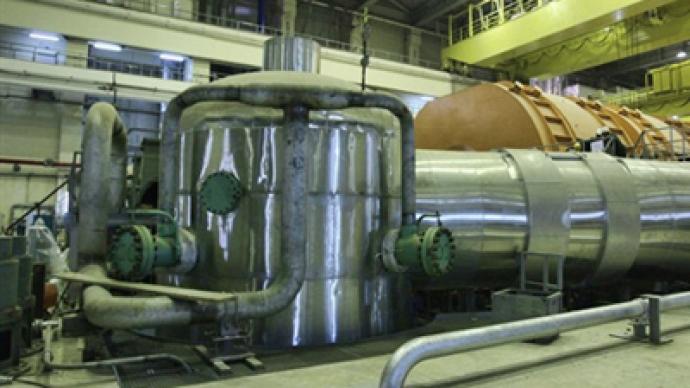Rumors mount as Bushehr nuclear plant readies for power launch

Israeli and Western media report that an Israeli-developed computer virus has threatened to turn the Bushehr nuclear power plant into a new Chernobyl. The news was quickly refuted by the Russian nuclear corporation Rosatom.
The timing of the rumor indicates that the forthcoming power launch of the station is worrying Israel and its allies. On Monday Russia’s state corporation Rosatom reported that the computer systems of the Bushehr nuclear power plant were free of any viruses that could potentially compromise the station’s security. “There are no viruses in the station’s information systems, to say nothing of the systems that protect its security, because this computer system is a local one and it is fully isolated from external sources,” Rosatom’s official spokesman was quoted by Russia’s Interfax news agency as saying. The comment appeared after British newspaper Daily Telegraph claimed that it possessed an intelligence report, according to which some unnamed Russian scientists warned their superiors that Bushehr could turn into a new Chernobyl due to the damaged caused by mysterious Israeli computer virus called Stuxnet. The paper also published a quote from the report reading that the Russian team "cannot guarantee safe activation of the reactor."In September one of the Iranian managers working in Bushehr, Mahmoud Jafari, told the Associated Press news agency that personal computers of some of the station’s employees were infected by Stuxnex, but there was no damage whatsoever to the station’s computers. One day prior to the Daily Telegraph allegation, The New York Times shed some light on the Stuxnet program, saying that the virus had been jointly developed by the US and Israeli intelligence and also that Israelis had already tested the virus at their Dimona facility in the Negev desert. The paper said that the virus was developed in Dimona more than two years ago and was successfully planted into the Iranian nuclear program. US Secretary of State Hillary Clinton recently claimed that the Stuxnet project was a success and said that the Iranian nuclear program had been thrown back by several years. What could have possibly caused the contradiction is the difference between the nuclear power plant such as Bushehr and the nuclear facility such as Israeli Dimona or Iranian Natanz fuel enrichment plant. The latter two are not reactors, but clusters of centrifuges used for uranium enrichment. The damage to these devices while being materially substantial could never lead to an environmental disaster such as Chernobyl. Aside from this, the warning from the alleged Russian specialists seems a little outdated, as the reactor in Bushehr is already operational. Iran commenced loading fuel rods in it last August and fully completed the operation by the end of November 2010. Ali Akbar Salehi, the head of the Iranian nuclear project, said then that the industrial use of the power plant would start in two months.In December last year, Russian Deputy Prime Minister Igor Sechin said at an international forum in Istanbul that the physical launch of the power plant was coming to an end and that the station would be connected to Iranian power grid “very soon”.













